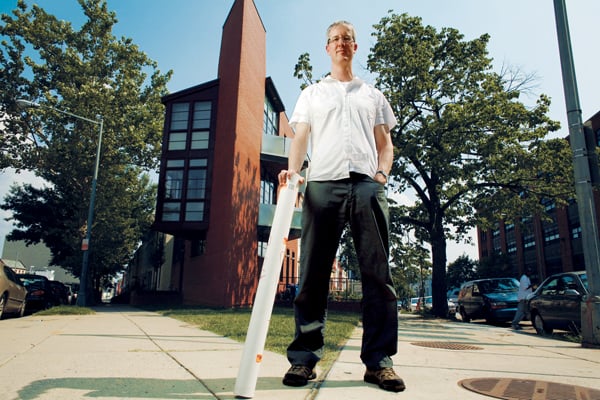When Jeff and Alice Speck began building their home, passersby would stop and stare. The house sits on a sliver of land at Tenth Street and Florida Avenue in Northwest DC. “They’d say there was no way to fit a house on that lot,” says Jeff.
A city planner and former design director for the National Endowment for the Arts, Speck chose the site because it’s the tip of the original L’Enfant Plan. “I wanted to find a lot that demonstrates what makes DC’s layout different,” he says.
In L’Enfant’s plan, diagonal avenues cut through the city’s street grid, creating lots of small triangular plots. Zoning restrictions make building on them hard; it took Speck more than a year to get all the permits.
Co-author of Suburban Nation: The Rise of Sprawl and the Decline of the American Dream, Speck is an advocate of urban living—and feels cities should take advantage of all usable space.
Speck, who has a master’s in architecture, designed the house himself. To fit 2,000 square feet of space onto the 500-square-foot lot, he inserted a rectangle into the top two floors of the four-level, triangular house. The jagged, modern design seems to change shape from different angles.
One tip of the triangle houses the wood-burning stove and chimney, another the spiral staircase that had to be lowered in by crane. Inside, it’s easy to forget you’re in a triangle—especially on the third floor, where the rectangular living room has glass on three sides.
Transforming the “little forlorn corner” into a home wasn’t easy, but Speck welcomed the challenge: “I wasn’t going to make the biggest investment of my life and not have it be a design opportunity.”
This article first appeared in the September 2008 issue of The Washingtonian. For more articles like it, click here.


















